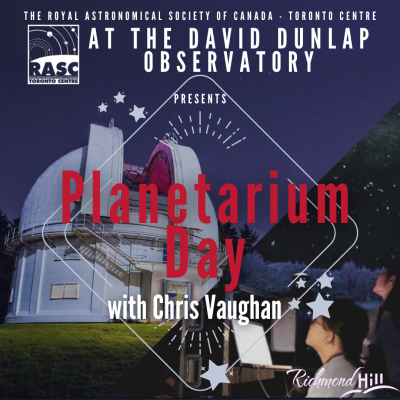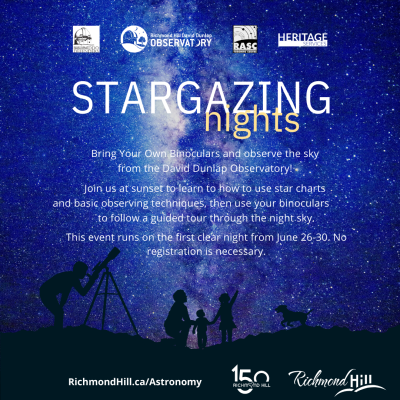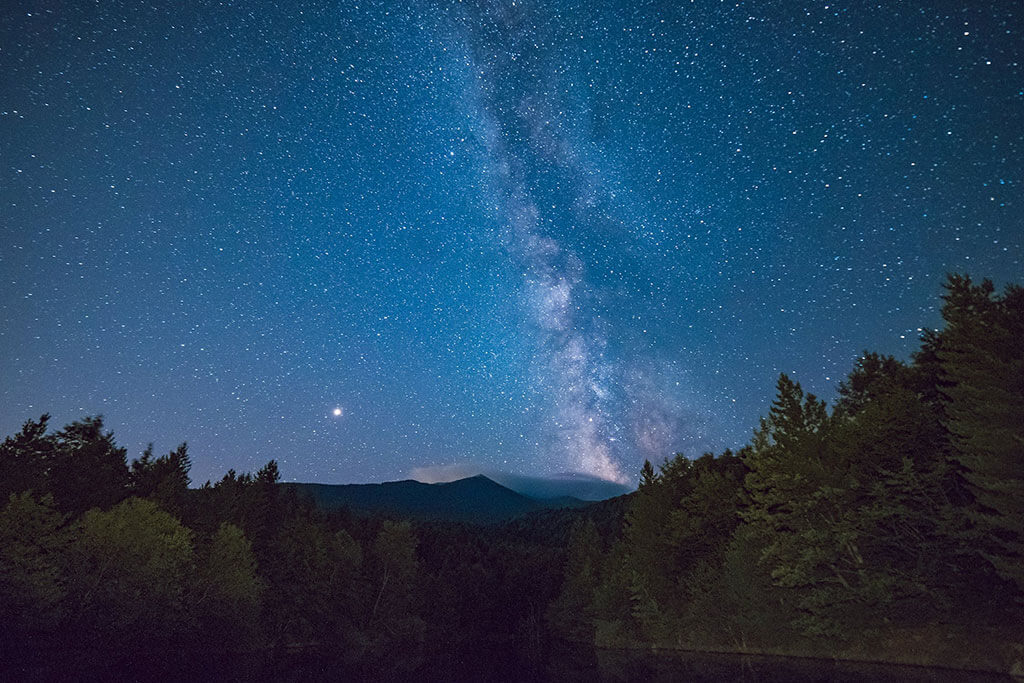
26
August
DDO Planetarium Day - August 2023
Visitors aged 6 and older will enter a Digital Portable Planetarium and take a journey through the universe led by a DDO astronomer.

22
July
DDO Planetarium Day - July 2023
Visitors aged 6 and older will enter a Digital Portable Planetarium and take a journey through the universe led by a DDO astronomer.

25
July
Stargazing Night - July 2023 (GO for Tuesday)
Bring Your Own Binoculars and observe the sky from the David Dunlap Observatory!

28
June
Stargazing Night - June 2023 (GO for Wednesday)
Bring Your Own Binoculars and observe the sky from the David Dunlap Observatory!

26
July
Age of the Universe
This summer, the University of Toronto and the Dunlap Institute of Astronomy and Astrophysics are holding a workshop for grade 11 and 12 students in the GTA which aims to provide a hands-on introduction to coding, lectures on cutting-edge astrophysics, and answers to your questions about university.

10
May
AstroEdu 2023: The Astronomy Education Conference
AstroEdu 2023 will bring together researchers, teachers, and students from across the world to discuss the latest developments in astronomy education at all levels.

18
April
Misconceptions about the Universe: From Everyday Life to the Big Bang
A gentle introduction to astronomy through the numerous misconceptions about all aspects of it.

25
March
AstroTours - Earth Hour 2023 Event
Each year on the last Saturday of March, we at AstroTours honour Earth Hour and hope to bring awareness to issues impacting our planet.
This year is no exception! Join us on March 25 for an evening of short talks and a Q&A panel with three scientists at the forefront of environmental research.
Speakers:
- Devon Gray, member of the Hydrometallurgy group at Hatch

7
March
Sky Cultures and Knowledges
Learn about the World Asterisms Project and hear from expert panelists about storytelling and astronomy.

11
March
March Break 2023 - Space Action: Craters and Comets!
This March Break, join the David Dunlap Observatory to explore some of the dynamic action of space through comets, craters, and more!
